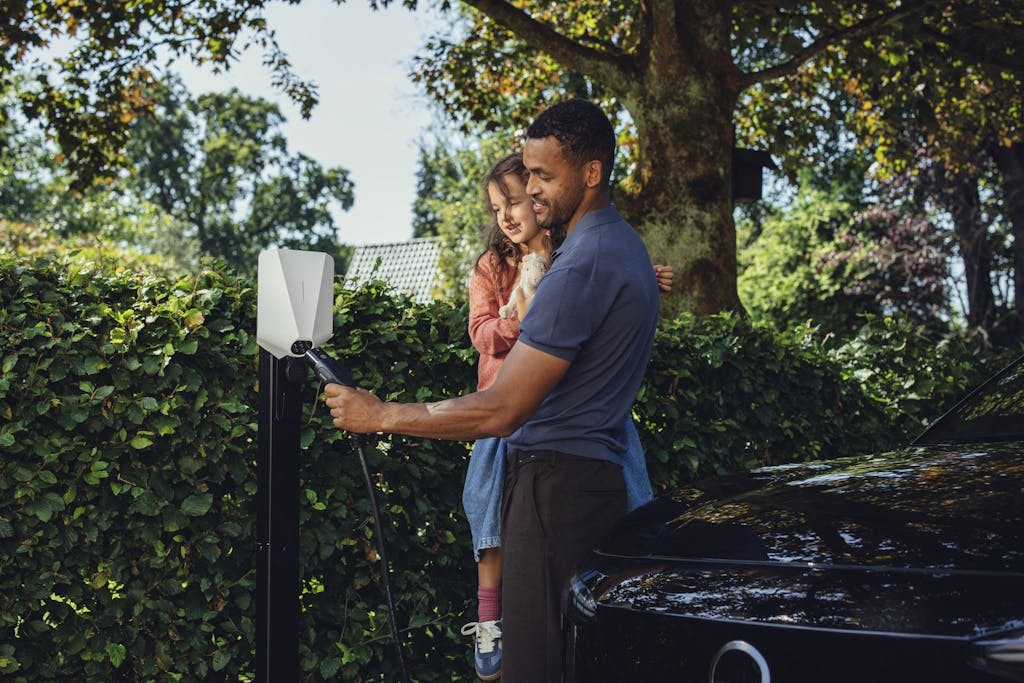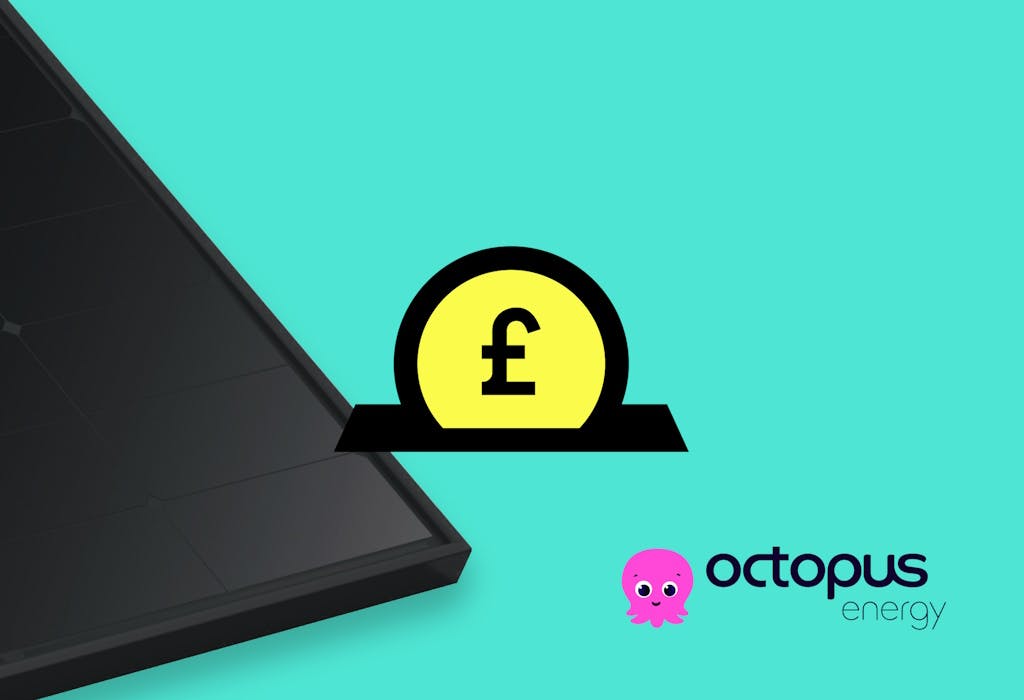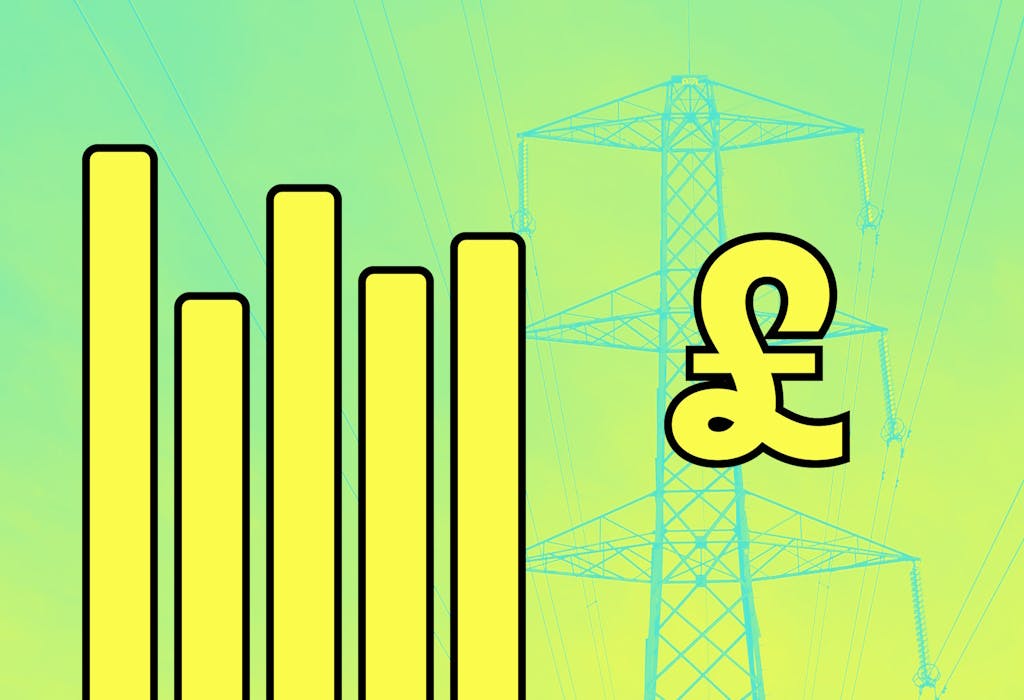- Solar advice hub
- Exporting-to-the-grid
- Intelligent Octopus Go: is it worth it?
Intelligent Octopus Go: is it worth it?
Here's how Intelligent Octopus Go works with your car and home, how much you can save, and whether you should sign up.


Why you can trust our content
We know that the solar industry is full of misinformation, but we only use reliable sources, including:
- Our experienced solar experts, installers and system designers
- Our own database of solar & battery system designs
- Authoritative bodies like MCS and the UK government




Intelligent Octopus Go: at a glance
It’s rare that your electricity tariff saves you money – but if you’re an electric vehicle driver, Intelligent Octopus Go could be extremely profitable.
Eligible customers can charge their car for a generously low rate at any time, as long as they follow the right steps – and for six hours every night, they can also use this cheaper electricity throughout their home.
In this guide, we’ll explain how Intelligent Octopus Go works with your car and home, how much you can save, and whether it’s the best tariff for your household.
And if you already have an electric vehicle, we recommend powering your car with solar. To find out how much you could save with a solar & battery system, enter a few details below and we’ll provide an estimate.
Find out how much you can save
What kind of home do you live in?
What is Intelligent Octopus Go?
Intelligent Octopus Go is a smart import tariff with peak and off-peak periods that allows electric vehicle drivers to always use their home charger at a cheap rate.
Its off-peak rate also enables households to consume electricity at a substantially cheaper rate between 11:30pm and 5:30am.
It’s just an import rate, so if you have solar panels, you’ll need to pair it with an export tariff to benefit fully (such as Octopus Outgoing Fixed).
Intelligent Octopus Go is also a virtual power plant, which in this case is a collective of homes with a smart EV charger that's controlled by Octopus to charge up at the cheapest time.
This virtual power plant now contains more than 150,000 electric cars.
How does Intelligent Octopus Go work?
Once you’ve switched to Intelligent Octopus Go, just connect your electric vehicle or charger to the Octopus app.
Then all you need to do is enter how much charge you want and when you need your car to be ready to go, and Octopus will deal with the rest.
Your car will charge when it’s the cheapest time for Octopus to buy electricity from the grid – but whenever it happens, you’ll pay 7p per kWh.
This electricity is 74% cheaper than the price cap set by Ofgem, as of April 2025.
You can’t sign up to Intelligent Octopus Go with more than one car, but if you do have a second electric vehicle, you can use this off-peak period to charge it.
The household can also use electricity at this 7p per kWh rate every day between 11:30pm and 5:30am – so if you can shift your dishwasher, washing machine, and tumble dryer usage to this time period, you may be able to significantly cut your electricity bills.
The rest of the time, you’ll usually pay slightly more than you would on a standard tariff, though this varies depending on where you live.
To sign up for Intelligent Octopus Go, click the button below.
Intelligent Octopus Go: the key details
If you have an eligible car and charger – and at this point, most EV drivers do – you should be able to lock in your Intelligent Octopus Go savings for a while.
The off-peak rate has only changed once since it started in 2022, from 7.5p to 7p per kWh, and with other low-cost EV tariffs hitting the market, that price is more likely to fall than rise.
However, you can expect the peak rate to rise and fall every three months, roughly in line with Ofgem's price cap.
| Details | |
|---|---|
| Provider | Octopus Energy |
| Tariff name | Intelligent Octopus Go |
| Tariff type | Variable |
| Tariff change frequency | Rare |
| Average savings vs normal tariff | £424 per year* |
| Requirements | • Have an eligible car and charger • Receive electricity from Octopus |
| Exit fee? | £25 on the fixed rate |
Intelligent Octopus Go vs Octopus Go
| Feature | Intelligent Octopus Go | Octopus Go |
|---|---|---|
| Off-peak rate | 7p/kWh | 9p/kWh |
| Off-peak period | 11:30pm-5:30am | 12:30am-4:30am |
| Advanced charging? | Yes | No |
| Best export tariff it can pair with | Outgoing Fixed (15p/kWh) | ScottishPower SmartGen (12p/kWh) |
| Compatibility | Limited to certain cars and chargers | All cars and chargers |
Octopus Go has a shorter, more expensive off-peak period than Intelligent Octopus Go, but it is more accessible.
It was the company’s first electric vehicle tariff, and is still available to anyone who has an electric vehicle and charger, whereas Intelligent Octopus Go can only be used by households with specific models.
There’s no publicly available list of eligible cars or chargers, unfortunately, but you can use Octopus’s tool to find out if yours are compatible. Many vehicles do work with Intelligent Octopus Go, including models made by brands like Audi, Ford, Tesla, and Volkswagen.
From 12:30am to 4:30am, you can charge your car and use electricity in your home on Octopus Go's off-peak rate of 9p per kWh – which is 2p per kWh more expensive than Intelligent Octopus Go.
This means the off-peak rate for Octopus Go is 20% more expensive than it is on Intelligent Octopus Go, as well as being an hour shorter.
With Intelligent Octopus Go, you can also charge your car for 7p per kWh outside of the off-peak period, if you use the app to request a charge in advance. Octopus Go doesn’t offer this feature.
Solar households in the UK that are on Intelligent Octopus Go can also benefit from Octopus's Outgoing Fixed export rate, which pays 15p per kWh.
In contrast, Octopus limits Go users to its 8p per kWh Outgoing Fixed Lite tariff. To get a higher export rate, they have to sign up to ScottishPower's 12p per kWh SmartGen tariff.

Why did Octopus set up Intelligent Octopus Go?
Octopus created Intelligent Octopus Go to attract the growing number of electric vehicle owners.
A record-breaking amount of electric cars were sold in 2023 – and in most years over the past decade – and Octopus clearly wants to corner this market.
Intelligent Octopus Go also gives Octopus the flexibility to purchase electricity from the grid when it’s cheapest.
When Intelligent Octopus Go users provide a timeframe – for instance, by setting their car to be 80% charged by 7am the next day – the supplier can then assess wholesale rates to buy this electricity at the ideal moment.
The Octopus tariff is one of several – including Intelligent Octopus Flux and Agile Octopus – that incentivises customers to change their energy habits by generating electricity, storing it, and shifting when they use it.
What are Intelligent Octopus Go’s rates?
This table gives an indication of Intelligent Octopus Go rates in different places around the UK.
The off-peak rate is the same across the country, but the peak rate and standing charges vary depending on where you are.
The tariff has two options – fixed or variable – so you can either lock in a rate for 12 months, or be subject to changing prices every three months.
We're displaying the fixed rates below.
| City | Off-peak rate (11:30pm-5:30am) | Peak rate (5:30am-11:30pm) | Standing charge |
|---|---|---|---|
| Birmingham | 7p/kWh | 26.81p/kWh | 51.69p/day |
| Bristol | 7p/kWh | 28.08p/kWh | 53.37p/day |
| Cardiff | 7p/kWh | 28.1p/kWh | 49.87p/day |
| Edinburgh | 7p/kWh | 26.2p/kWh | 55.92p/day |
| London | 7p/kWh | 26.98p/kWh | 44.66p/day |
| Manchester | 7p/kWh | 26.74p/kWh | 47.72p/day |
| York | 7p/kWh | 26.66p/kWh | 58.07p/day |
All rates correct as of 23 April 2024.
From 11:30pm to 5:30am every day, you can use grid electricity for 7p per kWh on Intelligent Octopus Go.
This off-peak rate is nearly four times lower than the price cap rate for electricity, as of April 2025.
Octopus occasionally extends the time period by 30 minutes or so, and will let you know in advance when this happens.
When you use electricity outside of these times, it’ll cost you the peak rate, which is typically a bit more than the energy price cap rate – though it changes depending on your region, as does the standing charge.
You can also charge your electric car for 7p per kWh, as long as you either do it during the off-peak phase or use the Octopus app to request a certain amount of charge by a specific time.
If you want to charge your vehicle immediately, you can start a ‘bump charge’, but you’ll pay whatever the rate is at that time.
So if you choose to bump charge from 12am to 2am, for example, you’ll pay 7p per kWh, but if you bump charge from 7pm to 9pm, you’ll pay the peak rate.
If you have solar panels, Intelligent Octopus Go's supply of cheap, off-peak electricity allows you to use more of your solar-generated electricity to power your home – saving you even more money.
To find out roughly how much you could save with a solar & battery system, answer a few quick questions below and we’ll provide an estimate.
Find out how much you can save
What kind of home do you live in?
How much can you save with Intelligent Octopus Go?
If you drive 7,000 miles per year – which is the average, according to NimbleFins – we estimate you'll save around £424 by switching to Intelligent Octopus Go, compared to the April 2025 price cap.
Solar panel owners should sign up for an export tariff too, such as Octopus Outgoing Fixed, which pays 15p per kWh of solar electricity you send to the grid.
On this tariff, a household with a 4.4kWp (kilowatt-peak) solar panel system and an annual electricity consumption of 3,500kWh (kilowatt-hours) will typically earn another £190 per year.
You can technically get your export tariff from any supplier, but many companies won’t let you use their export rate if you don’t import your electricity from them.
To find the ideal choice for your household, read our continually updated guide to the best SEG rates.
The best EV chargers for Intelligent Octopus Go
- Hypervolt Home 3 Pro
- Indra Smart Lux
- Myenergi Zappi
- Ohme Home Pro
- Wallbox Pulsar Max
Only a limited number of chargers are compatible with Intelligent Octopus Go – and these are your best bet.
The Hypervolt Home 3 Pro joined this group in late 2024. It's a 7.4kW tethered charger, comes with a three-year warranty, and uses a colour-coded LED light to show you its status.
You'll know at a glance if it's locked, charging, or scheduled to charge.
Myenergi's Zappi charger is one of the most affordable on the market, comes untethered or tethered, and is now multiphase.
That means you can choose its 7kW setting for a single-phase system, or switch to 22kW if you have three-phase electricity.
The Ohme Home Pro is a tethered 7.4kW model with a screen that allows you to see what it's doing, how much charge your car has, and when it should reach its charging target.
You can also enter commands via the screen, as well as on the app.
Wallbox's 7.4kW Pulsar Max is small, sturdy, and uses colour-coded lights on its sides to tell you what it's up to.
Indra's 7.4kW Smart Lux is the newest entry to this list. This compact charger also uses differently coloured lights to show what it's doing at any given time.
Hypervolt, Myenergi, and Wallbox's chargers are also among the best EV chargers for solar charging. To find out more, read our guide to charging your electric car with solar panels.
Intelligent Octopus Go with a solar & battery system
If you also have a solar panel system as well as an electric vehicle, you can take advantage of an export tariff alongside Intelligent Octopus Go.
Your best choice is Octopus Outgoing Fixed, which pays 15p for every kWh of electricity you send to the grid.
This would result in annual earnings of £190 for the average household with a 4.4kWp system, as of April 2025.
However, if your household also has a heat pump, you may want to use Cosy Octopus instead of Intelligent Octopus Go.
Cosy Octopus offers an off-peak rate three times per day – from 4am to 7am, 1pm to 4pm, and 10pm to 12am – that’s around 50% cheaper than your region’s Flexible Octopus rate.
You should also consider Intelligent Octopus Flux as an option, especially if you have a solar panel system that's bigger than 5.2kWp.
This smart import and export tariff offers higher rates during the 4pm-7pm peak time than they are at any other point, but they always stay level with each other. Octopus also takes control of your battery, using it as a selling machine that maximises your profits.
The main downside is that you won't get the cheap import rate that Intelligent Octopus Go offers.
How can you sign up for Intelligent Octopus Go?
To sign up for Intelligent Octopus Go, you’ll first need to check your car and charger are eligible.
Then you have to change tariffs. If you’re already getting your electricity from Octopus, you can make the switch in your Octopus app.
If not, just sign up for a different import tariff on Octopus’s site – which is free and should take no more than three weeks to go through – and then move to Intelligent Octopus Go.
You can connect your car and charger to Octopus and agree to the terms and conditions through the app, then all you need to do is complete a test charge, and you’ll be set.
To sign up for Intelligent Octopus Go, click the button below.
Eligibility requirements
To be eligible, you must receive your electricity from Octopus – though if you’re not currently, you can just switch before signing up for Intelligent Octopus Go.
You’ll also need a smart meter, which you can get installed for free by contacting your energy supplier, and a compatible electric vehicle and charger.
There’s no definitive list of approved models, but many cars and chargers are eligible.
You must also have an Apple or Android device, as you’ll need to sign up and set your charging schedule through the Octopus app.
How long does it take?
If you already get your electricity from Octopus, the switch should take next to no time – all you need to do is go through the relatively quick sign-up process.
If you currently use a different supplier, it should take three weeks at most for the companies involved to wrap up your move.
This short time frame is due to the Energy Switch Guarantee, which is a series of standards created by trade association Energy UK that all the major suppliers have signed up to follow.
Is Intelligent Octopus Go worth it?
Intelligent Octopus Go is worth it for many electric vehicle drivers, as it's a flexible, money-saving tariff – but it’s not the right choice for everyone.
If you have an EV and a large solar & battery system, and export most of the electricity it produces, you may be better off choosing Intelligent Octopus Flux.
This smart import and export tariff involves Octopus buying and selling grid electricity on your behalf to achieve the highest returns.
If you have a solar & battery system and don’t own an electric car, Intelligent Octopus Flux could be your best option – unless you have a heat pump.
In that case, you may want to use Cosy Octopus, which provides three off-peak periods per day which you can use to heat your home cheaply.
And if your circumstances change, you can switch between Octopus tariffs at any time, for free.
If you already have an electric vehicle, we recommend powering your car with solar-generated electricity. To find out how much you could save with a solar & battery system, enter a few details below and we’ll generate a quick estimate.
Find out how much you can save
What kind of home do you live in?
Intelligent Octopus Go: FAQs
Related articles

Intelligent Octopus Flux: explained
Read full story
What are the best SEG rates?
Read full story
The Smart Export Guarantee: explained
Read full story
How to charge your electric car with solar panels
Read full story
Written byJosh Jackman
Josh has written about the rapid rise of home solar for the past six years. His data-driven work has been featured in United Nations and World Health Organisation documents, as well as publications including The Eco Experts, Financial Times, The Independent, The Telegraph, The Times, and The Sun. Josh has also been interviewed as a renewables expert on BBC One’s Rip-Off Britain, ITV1’s Tonight show, and BBC Radio 4 and 5.